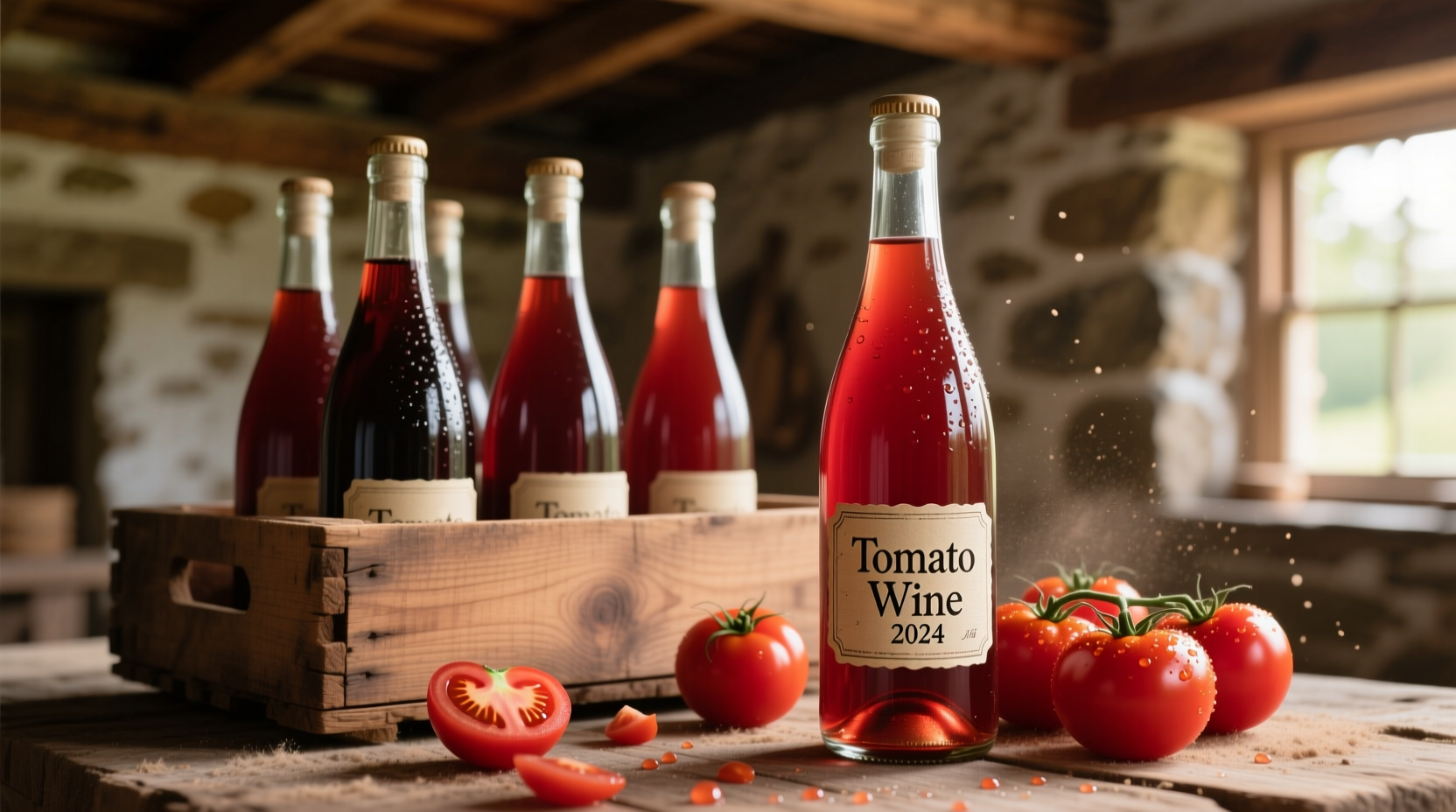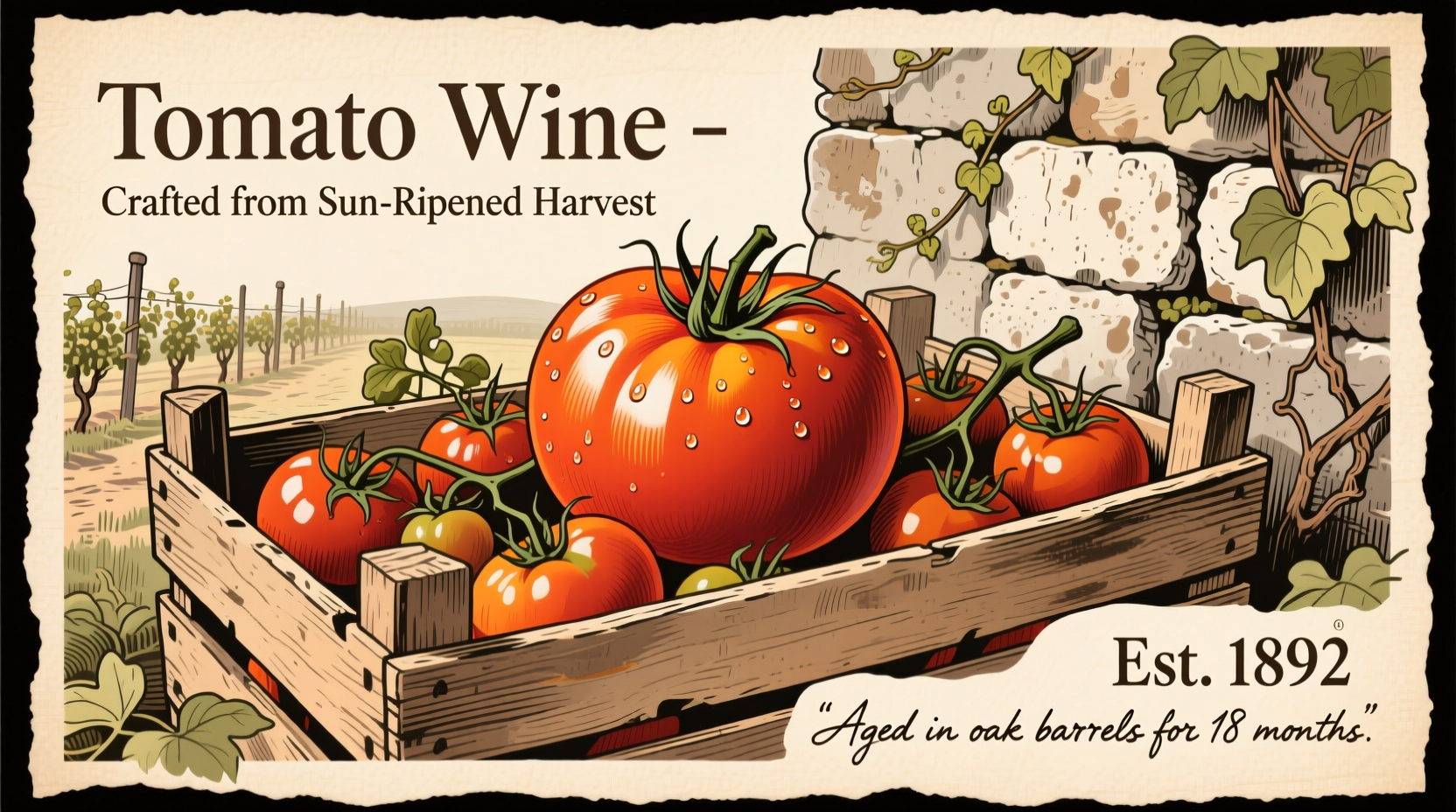Discovering the Unexpected World of Tomato Wine
Imagine sipping a glass of wine that delivers the bright acidity of tomatoes with complex fermented notes—this isn't science fiction but a centuries-old tradition experiencing a modern revival. Unlike grape wine, tomato wine transforms the humble fruit we associate with salads and sauces into an elegant beverage with surprising sophistication.
What Exactly Is Tomato Wine?
Tomato wine is a fermented alcoholic beverage created through the controlled fermentation of tomato juice. Despite common misconceptions, it's not simply tomato juice with alcohol added, but a carefully crafted product where natural sugars in tomatoes are converted to alcohol by yeast. The resulting beverage typically contains 10-14% alcohol by volume, comparable to many grape wines.
According to the University of Minnesota Extension, "Fruit wines made from non-traditional bases like tomatoes follow similar fermentation principles as grape wines but require specific adjustments for optimal flavor development." The key difference lies in the sugar content—tomatoes naturally contain less sugar than grapes, often requiring supplementation during the winemaking process.

The Evolution of Tomato Wine: From Necessity to Novelty
| Time Period | Development | Historical Context |
|---|---|---|
| Early 1900s | First documented recipes | American home winemakers sought alternatives during Prohibition |
| 1930s-1940s | Widespread home production | Great Depression era resourcefulness with abundant garden produce |
| 1970s | Resurgence in artisanal circles | Back-to-the-land movement and interest in self-sufficiency |
| 2010s-Present | Commercial production growth | Craft beverage revolution and interest in unique flavor profiles |
This historical timeline reveals how tomato wine evolved from a practical solution during challenging times to a specialty product appreciated for its distinctive character. The USDA Agricultural Research Service documents early 20th century experiments with vegetable-based wines as part of broader food preservation research.
How Tomato Wine Is Made: A Practical Guide
Creating quality tomato wine requires understanding both the science of fermentation and the unique properties of tomatoes. Here's a professional approach to crafting exceptional tomato wine:
Essential Ingredients and Equipment
- Fresh, ripe tomatoes (approximately 15-20 pounds per gallon of wine)
- Wine yeast (specific strains like Lalvin 71B or EC-1118)
- Sugar (to achieve proper alcohol content)
- Acid blend (to balance natural acidity)
- Wine stabilizers (potassium metabisulfite and potassium sorbate)
- Basic winemaking equipment (fermentation vessel, airlock, siphon, bottles)
Step-by-Step Production Process
- Preparation: Select ripe, blemish-free tomatoes and wash thoroughly
- Extraction: Crush tomatoes and extract juice (approximately 1 gallon of juice per 15-20 pounds of tomatoes)
- Adjustment: Measure and adjust sugar content to 22-24°Brix using a hydrometer
- Acid Balance: Adjust acidity to 0.6-0.7% using acid blend
- Fermentation: Add yeast nutrient and wine yeast, maintain temperature at 65-75°F for 7-10 days
- Racking: Transfer to secondary fermentation vessel, repeating every 30 days until clear
- Bottling: Stabilize, clarify, and bottle after 6-12 months aging
Tomato Wine vs. Traditional Grape Wine: Key Differences
| Characteristic | Tomato Wine | Grape Wine |
|---|---|---|
| Base Ingredient | Tomatoes | Grapes |
| Natural Sugar Content | 3-5°Brix (requires supplementation) | 18-24°Brix (typically sufficient) |
| Acidity Profile | Higher natural acidity, often requires balancing | Varies by grape variety, generally lower |
| Flavor Notes | Bright, savory, umami undertones | Fruity, floral, varietal characteristics |
| Color Range | Amber to deep ruby | Straw to deep purple |
| Typical Alcohol Content | 10-14% ABV | 9-15% ABV |
According to sensory analysis conducted by the UC Davis Department of Viticulture and Enology, tomato wine develops complex flavor compounds during fermentation that create distinctive savory notes not found in traditional wines. The research indicates that lycopene and other tomato compounds contribute to both color stability and unique antioxidant profiles.
Practical Considerations for Tomato Wine Production
While making tomato wine is accessible to home winemakers, certain context boundaries affect success:
- Regional Suitability: Works best in areas with abundant tomato harvests (late summer to early fall)
- Tomato Variety Impact: Roma and San Marzano varieties typically yield best results due to higher solids content
- Seasonal Limitations: Fresh tomatoes produce superior wine compared to canned alternatives
- Time Investment: Requires 6-12 months aging for optimal flavor development
- Legal Considerations: Home production is legal in most US states within personal use limits (up to 100 gallons per adult annually)
Tasting Notes and Food Pairing Recommendations
Well-crafted tomato wine offers a distinctive sensory experience:
- Aroma: Bright tomato essence with subtle floral notes and fermented complexity
- Palate: Crisp acidity balanced by subtle sweetness, with savory umami undertones
- Finish: Clean with lingering fruit notes and moderate tannins
For optimal enjoyment, serve chilled (50-55°F) in standard wine glasses. Tomato wine pairs exceptionally well with Mediterranean cuisine, particularly dishes featuring olive oil, garlic, and fresh herbs. It complements tomato-based pasta sauces without overwhelming them—a challenge traditional wines often face.
Finding and Enjoying Quality Tomato Wine
While still a niche product, tomato wine is becoming more accessible:
- Commercial Producers: Look for specialty wineries in California, Oregon, and New York
- Farmers Markets: Increasingly available at artisan food markets during harvest season
- Home Production: The most reliable way to access high-quality tomato wine
- Wine Festivals: Specialty fruit wine competitions often feature tomato wine categories
When evaluating commercial tomato wines, check for production details including tomato variety used, fermentation method, and aging period. The American Wine Merchants Association notes that quality tomato wines will specify these details on their labels or websites.
Common Questions About Tomato Wine
Based on frequent inquiries from wine enthusiasts and home winemakers, here are answers to the most common questions:











 浙公网安备
33010002000092号
浙公网安备
33010002000092号 浙B2-20120091-4
浙B2-20120091-4